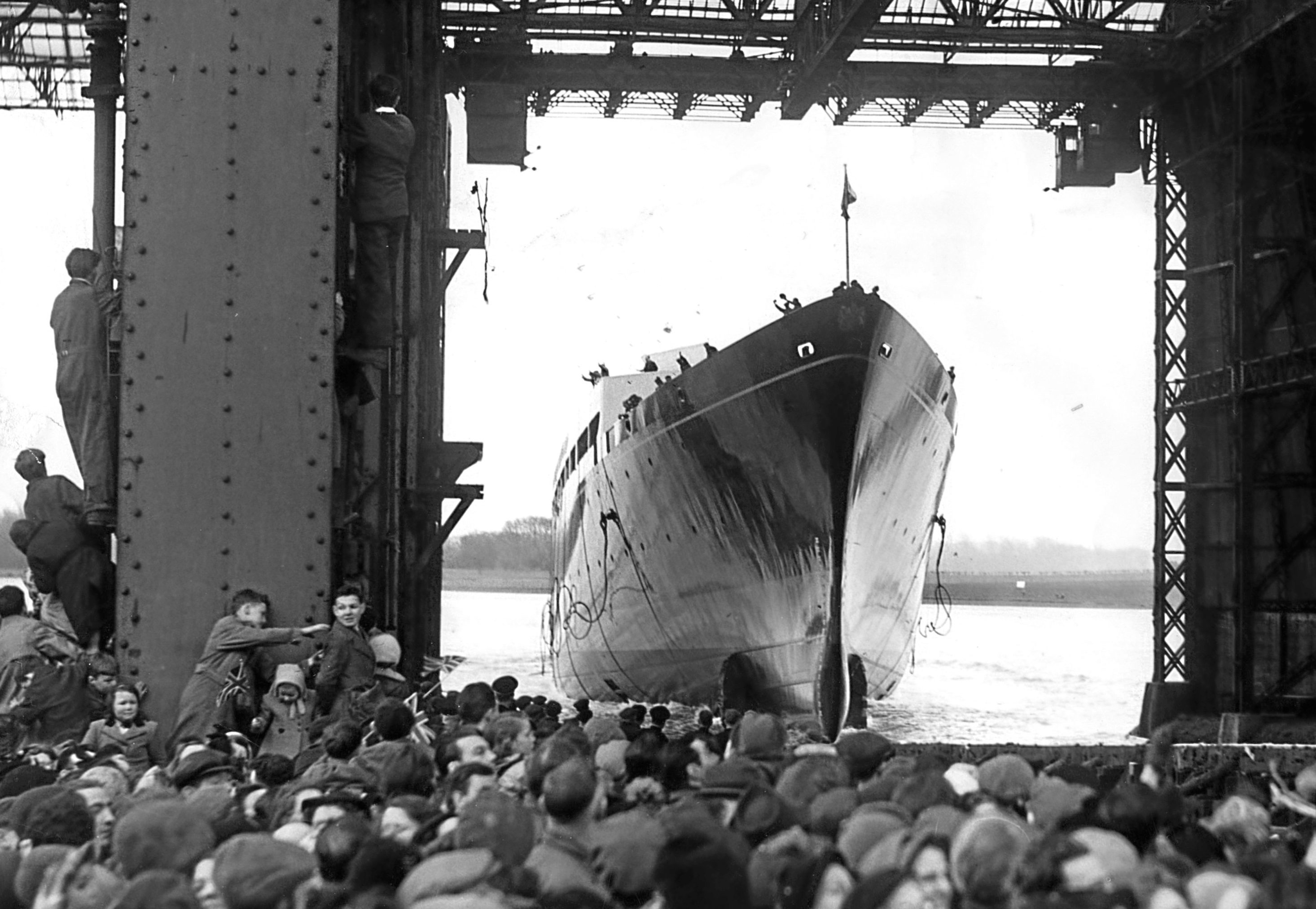
IT was the start of a long and valued relationship.
Sixty-five years ago, on April 16, 1953, the Queen launched Her Majesty’s Yacht Britannia, which would be her much-loved home away from home for the next 43 years of her reign.
Her Majesty never made any secret of just how much she adored being aboard Britannia, and her distress at her decommissioning ceremony in December, 1997, was such that she was reported to have shed a tear.
The Queen carried out the naming ceremony at John Brown & Co shipyards on the Clyde, where Britannia had been built.
She smashed a bottle of Empire wine on her bow as champagne was considered too extravagant in post-war Britain.
And this economy theme continued until she was commissioned the following year as the royal family had had a major say in how Britannia was decorated, or “fitted out” to use the proper nautical term.
Planned as a “floating palace” on which dignitaries could be entertained in the same opulence as Buck House, the Queen considered the original scheme for Britannia’s interior too extravagant and chose instead to go for understated elegance, so the yacht’s State Apartments, royal bedrooms and Sun Lounge have the relaxing feel of a homely country house.
Also, to reflect the nation’s prevailing “make-do-and-mend” attitude, many of the vessel’s fittings were recycled from previous Royal Yachts.
The one time this austerity was changed was when the Prince and Princess of Wales honeymooned on the yacht, a royal tradition begun by Princess Margaret in the Caribbean in 1960, and Charles ordered a bigger double bed to replace the more modest one on board.
Interestingly, Her Majesty wasn’t the first royal passenger. That honour fell to Princess Anne and the aforementioned Prince Charles, who sailed on the Royal Yacht’s maiden voyage from Portsmouth to Malta’s Grand Harbour, and then on to Tobruk, where they met the Queen and Prince Philip at the end of the couple’s marathon Commonwealth tour, and they embarked on Britannia for the first time from there on May 1, 1954.
When on royal duties, Britannia was always accompanied by a Royal Navy warship and this also hinted at her intended wartime role.
She was designed to be converted into a hospital ship in time of conflict, though this capability was never used, and in the event of nuclear war, the Queen and the Duke of Edinburgh were to take refuge aboard her as she hid in sea lochs on the north-west coast of Scotland under the codename Operation Candid.
The closest she came to one of these operational roles was when she evacuated more than 1,000 refugees during the civil war in Aden in 1986.
During her career, Britannia sailed more than a million nautical miles, carrying various royals on 696 foreign trips and 272 visits in British waters.
These included annual visits to Cowes Week at the beginning of August, and she’d spend the rest of the month cruising the islands off Scotland’s west coast on what became known as “the Western Isles Tour”.
Listed as part of the National Historic Fleet, Britannia is now permanently moored in the historic Port of Leith in Edinburgh, where she has proven to be one of Britain’s most popular visitor attractions.
More than 300,000 visitors each year are able to see just why the Queen loved the ship so much, and the royal connection was continued in 2011, when a drinks reception was held on board for her granddaughter Zara Phillips to mark her upcoming wedding to Mike Tindall.
Among the guests was the now Princess Royal, who’d been on that maiden voyage all those years ago.

Enjoy the convenience of having The Sunday Post delivered as a digital ePaper straight to your smartphone, tablet or computer.
Subscribe for only £5.49 a month and enjoy all the benefits of the printed paper as a digital replica.
Subscribe